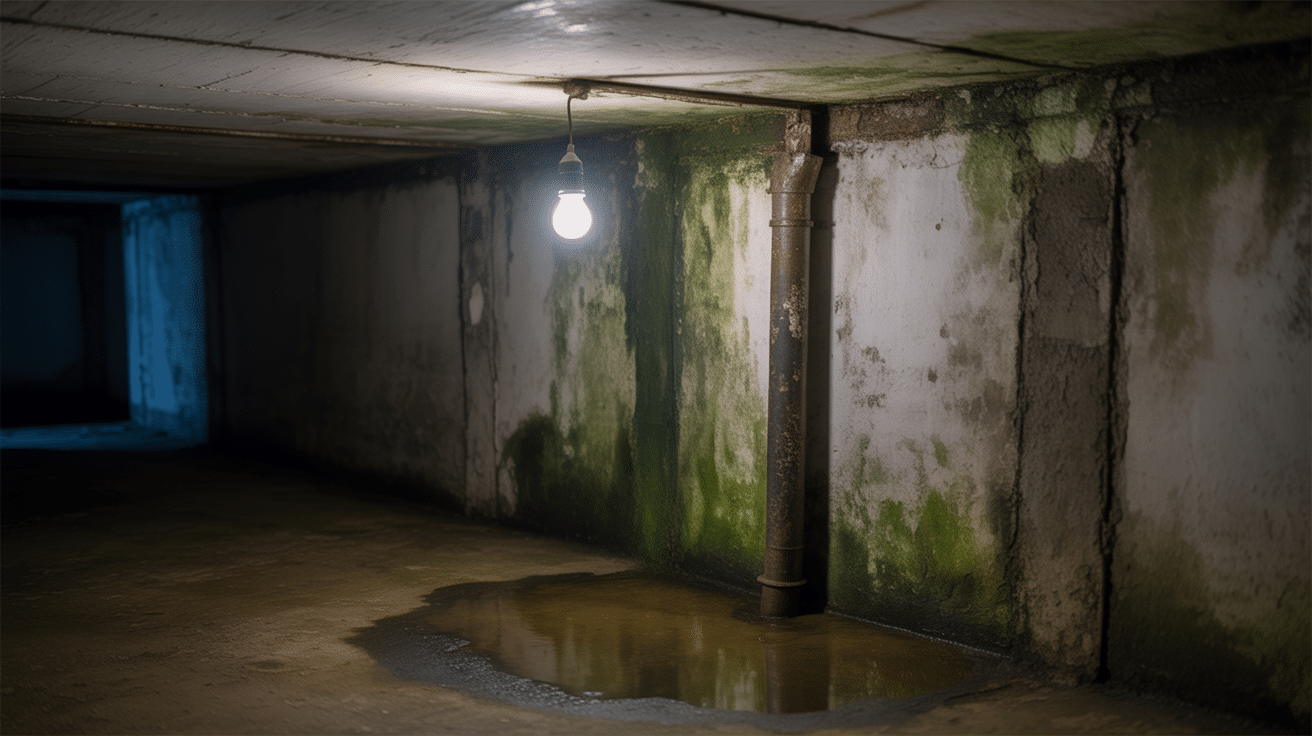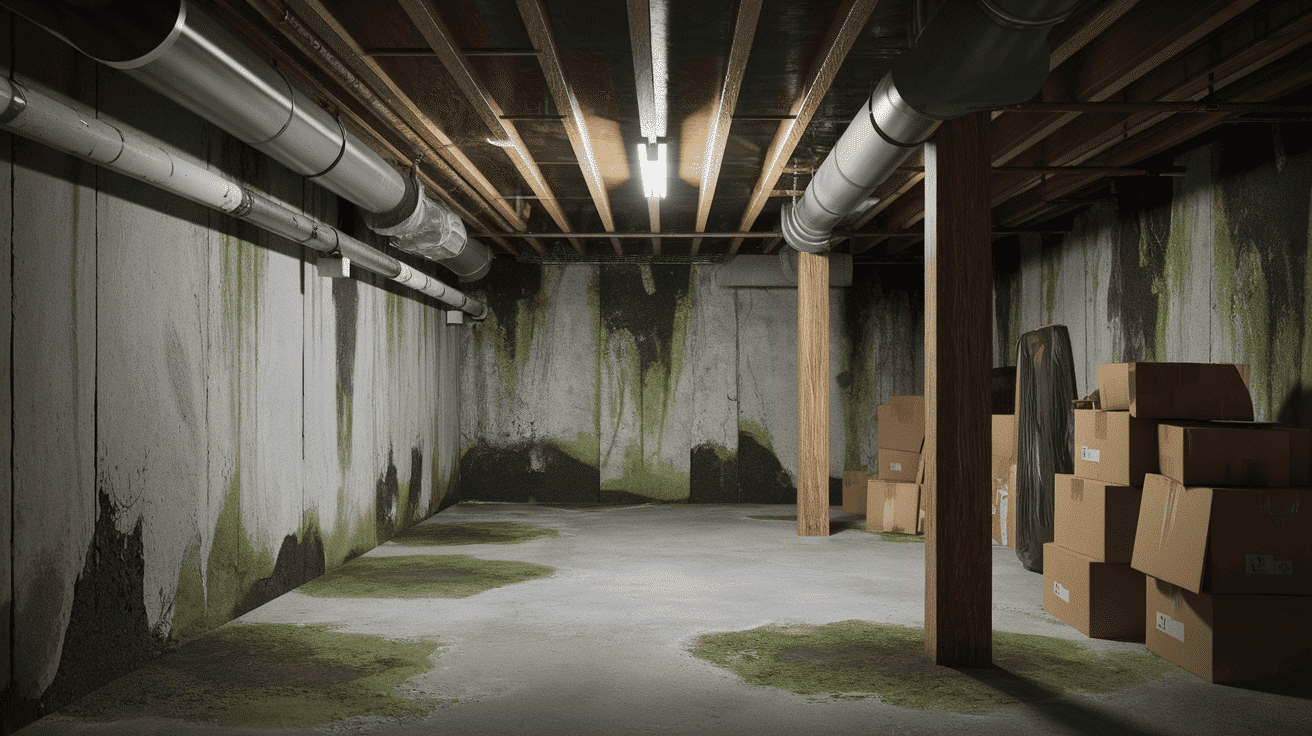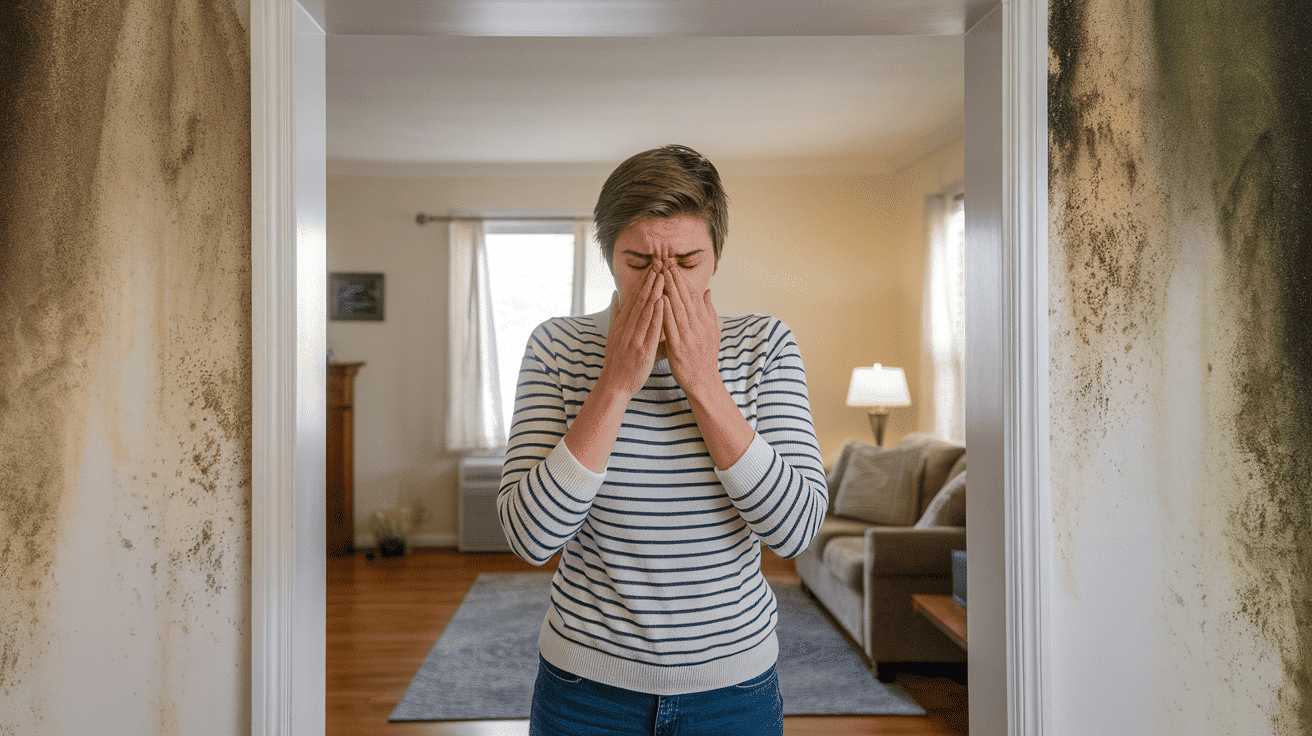Do you smell that musty odor upstairs but can’t figure out where it’s coming from?
You’re not alone. Thousands of homeowners face this frustrating problem every year. The truth is that the smell might be coming from your basement.
Many people think basement problems stay in the basement, but that’s not how mold works. Mold in the basement can affect the upstairs areas of your home in serious ways.
Mold spores can travel through your house, making your family sick and damaging your property value. Understanding how this happens gives you the power to protect your home.
Keep reading to learn exactly how basement mold spreads upstairs, what warning signs to watch for, and proven methods to stop it before it becomes costly.
Does Basement Mold Affect Upstairs?
Yes, mold in the basement can affect the upstairs areas of your home. This is a common problem that many homeowners face.
Mold doesn’t stay put in one location. It spreads through your house in several ways.
When mold grows in your basement, it releases tiny spores into the air. These spores are invisible to the naked eye. They float through your home and can cause health problems for your family.
The good news is that you can prevent and fix this problem. Understanding how mold spreads helps you take the right steps to protect your home.
How Mold in the Basement Affects Upstairs Areas?
Basement mold creates noticeable problems in your upstairs rooms. The effects often show up in ways you might not expect, making daily life uncomfortable for your family.
- Poor Air Quality: Rooms may feel stuffy or hard to breathe in, even with windows open. The air conditioning system works harder but can’t seem to freshen the air properly.
- Higher Energy Bills: Your HVAC system runs longer trying to maintain comfortable temperatures and humidity levels. This extra work puts strain on your equipment and raises monthly costs.
- Sleep and Focus Issues: Poor air quality from basement mold can lead to restless nights and difficulty concentrating during the day. Children and elderly family members often show symptoms first.
- Surface Contamination: Spores settle on furniture, carpets, and clothing. These areas then become new sites for mold growth if moisture levels are right, creating a cycle that’s hard to break.
These effects can start within hours of mold becoming airborne and continue as long as the basement problem remains untreated.
Why Mold Grows in Basements?
Basements are perfect spots for mold growth. They have everything mold needs to thrive.
- Moisture causes most mold problems. Basements tend to be damp because they’re below ground level. Water seeps through foundation walls and floors. Even small amounts of moisture can lead to big mold problems.
- Poor ventilation makes it worse. Most basements lack sufficient air circulation. Stagnant air traps moisture, creating ideal conditions for mold growth.
- Common moisture sources include leaky pipes or plumbing, foundation cracks, poor drainage around your home, condensation from temperature changes, and flooding or water damage.
- Darkness helps mold grow. Basements have little to no natural light. Mold loves dark spaces where it can grow undisturbed.
The combination of moisture, poor air flow, and darkness makes basements a hotspot for mold growth.
4 Ways Basement Mold Spreads Upstairs
As warm air rises from your basement, it carries mold spores upward into the upper levels of your home. This happens continuously, whether due to heating or cooling, making it easy for spores to travel throughout your house.
| Spread Method | How It Works | Risk Level |
|---|---|---|
| Airflow | Hot air rises, carrying spores upward | High |
| HVAC Systems | Ducts distribute spores throughout the house | Very High |
| Cracks & Gaps | Small openings allow spores to travel | Medium |
| People & Pets | Spores stick to clothing, shoes, and fur | Medium |
1. Airflow (Stack Effect)
As warm air rises from your basement, it carries mold spores upward into the upper levels of your home. This happens continuously, whether due to heating or cooling, making it easy for spores to travel throughout your house.
2. HVAC Systems
If your HVAC system’s ducts run through the basement, spores can hitch a ride and be circulated throughout your home. Return vents in the basement are particularly problematic, pulling in contaminated air and distributing it to other rooms.
3. Cracks and Gaps
Tiny cracks and gaps around pipes, windows, and walls allow mold spores to escape the basement and travel upstairs. These small openings often go unnoticed but create easy pathways for mold to spread.
4. People and Pets
You and your pets can carry spores. Mold spores stick to clothing, shoes, and pet fur. When you walk from the basement to other areas, you transport spores with you. This explains why mold problems can appear in bedrooms and living areas.
This is why mold problems can appear in unexpected places throughout your home. Your daily activities become part of the spreading process. Even clean laundry can pick up spores if your washer and dryer are in a moldy basement.
Signs Basement Mold Affects Upstairs
Knowing the warning signs helps you catch mold problems early before they become serious health hazards. These symptoms often appear upstairs first, even when the mold source is hidden in your basement.
- Musty Smell: A musty odor is often the first sign. This smell might be stronger in your basement, but it can also appear upstairs. The smell often gets worse in humid weather.
- Health Symptoms at Home: You feel sick at home but better elsewhere. If family members experience respiratory problems, headaches, or allergies that improve when they leave the house, mold might be the cause.
- Visible Mold Growth: Dark patches on walls or ceilings are clear indicators of mold growth. Look for black, green, or brown spots, fuzzy growth on surfaces, or discoloration around windows or in corners.
- Increased Humidity: High moisture levels throughout your home signal problems. If upstairs areas feel damp or humid, basement mold might be affecting air quality.
- Worsening Allergies: Allergy symptoms that don’t go away are concerning. If over-the-counter allergy medications aren’t helping, mold exposure may be the underlying issue.
Health Risks of Mold in the Basement
Mold exposure can cause serious health problems for you and your family, ranging from mild allergies to severe respiratory issues.
Children, elderly adults, and people with existing health conditions face the greatest risks from basement mold contamination.
- Breathing problems are common. You might experience coughing, wheezing, and shortness of breath.
- Allergic reactions affect many people. Symptoms include sneezing, a runny nose, itchy eyes, and skin rashes.
- General symptoms impact daily life. Headaches, fatigue, and trouble concentrating are frequent complaints.
- Throat irritation causes discomfort. A scratchy or sore throat often develops after exposure to mold.
- Some people face higher risks. Children, elderly adults, and people with asthma experience more severe symptoms.
Stop Basement Mold from Spreading Upstairs
Prevention is the best way to protect your home from mold contamination and avoid costly remediation expenses. Taking these steps now can save you thousands of dollars and protect your family’s health in the long run.
| Prevention Method | What to Do | Why It Works |
|---|---|---|
| Use a Dehumidifier | Keep humidity below 50%, run year-round | Removes excess moisture that mold needs to grow |
| Fix Leaks Fast | Repair pipes, foundation cracks, and roof leaks immediately | Stops water sources before mold can develop |
| Add Proper Ventilation | Install exhaust fans, improve air circulation | Prevents moisture buildup and stagnant air |
| Seal Basement Cracks | Fill cracks in walls, floors, and around windows | Blocks moisture entry and spore migration |
| Professional Waterproofing | Get expert help for serious moisture problems | Creates a barrier against water intrusion |
Cost of Basement Mold Removal
Professional mold remediation typically costs $1,500 to $6,000 for most basements.
Small areas under 10 square feet may cost $500 to $1,500, while extensive mold covering an entire basement can reach $10,000 to $15,000 or more.
Several factors affect the final price, including the size of the affected area, the type of mold, the materials involved, and the location’s accessibility.
DIY removal costs $100 to $500 for supplies, but only works for small surface mold. You’ll need protective gear, cleaning solutions, and proper disposal methods.
However, improper DIY attempts often make problems worse and more expensive to fix later. The longer you wait to address mold problems, the higher the remediation costs become.
Final Thoughts
Mold in the basement can affect the upstairs areas of your home in ways that impact your health, comfort, and wallet. From poor air quality to structural damage, the effects reach far beyond your basement walls.
The stack effect, HVAC systems, and daily activities all help spread spores throughout your house. You now know the warning signs and proven prevention methods to protect your home.
Regular moisture control, proper ventilation, and quick leak repairs can save you thousands in remediation costs. Don’t wait until you smell that musty odor upstairs or notice health symptoms in your family.
Take action today by checking your basement for moisture problems and implementing the prevention strategies we covered. Your home and your family’s health are worth the investment in proper mold prevention.










